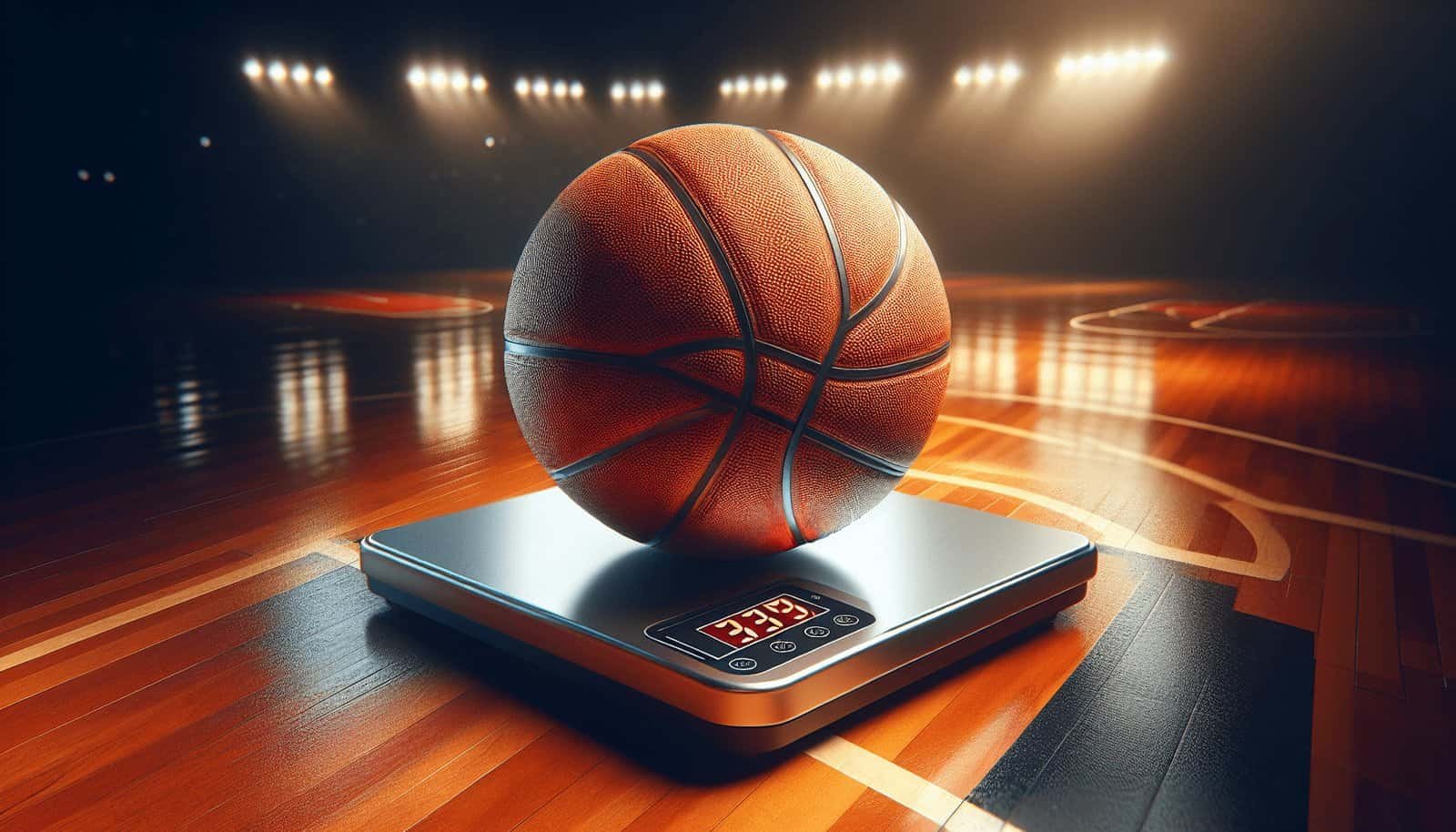Have you ever thought about how the weight of a basketball can affect your game? It’s a detail that’s often overlooked but plays a significant role in the way players interact with the game. Basketball might seem like it’s all about skill, strategy, and practice, but equipment factors like the weight of the ball can subtly influence performance and the flow of play.
The Basics of Basketball Weight
The standard weight of a basketball might seem trivial to some, but it has profound implications for players, whether they’re shooting hoops casually or putting their skills to the test in professional games. Understanding the basics will provide insight into why this aspect of the game matters.
Official Weight Standards
Basketball associations regulate the weight of basketballs to maintain consistency and fairness across the game. The weight varies slightly depending on whether the ball is used for men’s, women’s, or youth games.
- Men’s Basketball: Typically weighs around 22 ounces (approximately 620 grams).
- Women’s Basketball: Slightly lighter, weighing about 20 ounces (approximately 570 grams).
- Youth Basketballs: Can weigh roughly between 14 to 18 ounces (approximately 397 to 510 grams).
These standards ensure a level playing field and influence how players adapt their strategies and techniques.
Why Weight Matters
Understanding why the weight is important involves recognizing its impact on how the ball moves and reacts during gameplay. The weight affects bounce, trajectory, and how easily a player can control or shoot the ball. It might not be the first thing you think about when practicing your free throws, but it matters when considering the overall dynamics of the game.
Impact on Shooting and Passing
The weight of a basketball profoundly influences shooting and passing, two fundamental skills in basketball. Let’s break down how weight changes the way these actions are performed.
Shooting Precision
When you shoot a basketball, the weight determines how much force you need to exert. A heavier ball requires more strength, affecting accuracy and shooting form. For professional players, who often practice with the specific weight used in games, the consistency in weight helps them hone their precision. However, for younger or less experienced players, fluctuating weights can make developing a steady shooting form challenging.
Passing Dynamics
Passing requires transferring the ball efficiently and accurately between teammates. How you exert force will differ if you’re using a standard men’s ball versus a lighter youth or women’s ball. Lighter balls are easier to catch and throw, which can benefit younger players still developing their skills. However, using various weights in practice is crucial for adapting to different game situations and improving overall ball-handling abilities.

The Role of the Player’s Strength and Skill
The weight of the basketball isn’t just a static factor influencing gameplay; it also interacts dynamically with the individual player’s strength and skill level. Let’s dive into how these factors interplay.
Strength Considerations
The physical strength of players plays a significant role in how they manage the weight of a basketball. Stronger players might find it easier to adjust to heavier balls, effortlessly managing dribbles and shots. Conversely, younger or less physically strong players might struggle with heavier balls, potentially hindering skill development if not addressed correctly.
Skill Development
Skill level impacts how well a player can adjust to different weights. Experienced players benefit from standard weights as they offer predictability, allowing for better refinement of their techniques. On the other hand, beginners might need time to adjust to these weights, requiring patience and practice to reach a certain proficiency level. Training with various weights can also boost adaptability, preparing players for diverse playing conditions.
Influence on Game Strategy
The strategy of the game, whether you’re playing a quick-paced offensive match or a tightly controlled defensive game, can be influenced by the basketball’s weight. Let’s explore.
Offensive Plays
In offensive play, especially in fast-break situations, the basketball’s weight can dictate the speed and precision of passing. A lighter ball can make quick passes easier to execute, but it might be harder to control if the game pace increases too much. Conversely, a heavier ball requires more effort in passes but could offer players more control in structured, slower plays where precision is crucial.
Defensive Techniques
From a defensive standpoint, the weight of the ball can influence rebound strategies and defensive maneuvers. With a heavier ball, rebounds might not reach the same heights, affecting how defenders position themselves to catch or intercept. Lighter balls can lead to more unpredictable bounces, requiring defenders to be agile and adaptable. Understanding these dynamics helps teams and individual players tailor their defensive strategies to the specific gameplay context.

Psychological Implications
The psychological aspects of playing with different basketball weights can be profound and often influence player performance without them even realizing it.
Confidence and Comfort
Playing with a familiar ball weight can enhance a player’s confidence. Consistency in ball weight means players can focus more on their skills and techniques rather than adjusting their play style. Conversely, an unfamiliar weight can introduce anxiety, affecting performance until players adjust.
Adaptation and Resilience
Facing varying weights encourages players to develop resilience and adaptability. These psychological traits are vital in basketball, a game that often presents unpredictable situations. Players who learn to adapt quickly to varying ball weights may find themselves more equipped to handle the challenging dynamics of competitive games.
Impact on League and Professional Play
In professional basketball and league play, adherence to weight standards is rigidly observed. Let’s delve into why this is crucial.
Consistency in Professional Games
Consistency in ball weight is paramount in maintaining fair competition. Uniformity ensures that no team or player has an unintended advantage solely due to variations in the equipment used. This standardization allows players and teams to prepare adequately, focusing on improving skill rather than adapting to potential discrepancies in ball weight.
Equipment Regulations
The governing bodies of professional basketball, such as FIBA and the NBA, enforce strict guidelines regarding equipment, including ball weight. These regulations are set to preserve the integrity of the sport, ensuring that all players are held to the same standards and that every game is played on an equal footing.

Practice and Training Considerations
Understanding how ball weight affects gameplay can significantly influence training practices for individual players and teams.
Incorporating Different Weights
Including basketballs of varying weights in training sessions can enhance skill development. Practicing with lighter and heavier balls helps players adapt to a range of conditions, improving their ability to adjust quickly during gameplay. This approach is particularly beneficial for developing youth players, fostering versatility and adaptability from a young age.
Tailored Training Regimens
Coaches can use knowledge about basketball weight to design better training regimens, targeting specific skills or strategies. For example, practice sessions focusing on shooting might incorporate slightly heavier balls to build strength and precision, while passing drills could use lighter balls to enhance speed and coordination.
Future Trends and Innovations
As technology and research progress, the future holds potential developments regarding basketball technology and design that could fine-tune how weight plays a role in gameplay.
Innovations in Material
Advances in materials technology could lead to the development of basketballs that maintain traditional weight standards while adapting in other ways—for example, improving grip, bounce consistency, or durability. These innovations could alter how weight affects play, providing players with more control and precision.
Customizable Weights
Exploring the possibility of customizable basketball weights could bring new dynamics to training and gameplay. Players could adjust the ball’s weight to suit their training goals or strategy requirements, enhancing personalized training methodologies.

Conclusion
Ultimately, the weight of a basketball is much more than a trivial detail of the game; it plays a crucial role in various aspects of gameplay. From influencing shooting accuracy and passing speed to affecting strategic decisions and psychological readiness, basketball weight is integral to how you play and experience the game. By understanding and adapting to this element, you can improve not only your performance but also your enjoyment and appreciation of basketball. Whether you’re an up-and-coming athlete or a seasoned professional, considering the weight of the basketball could be the key to unlocking your full potential on the court.
